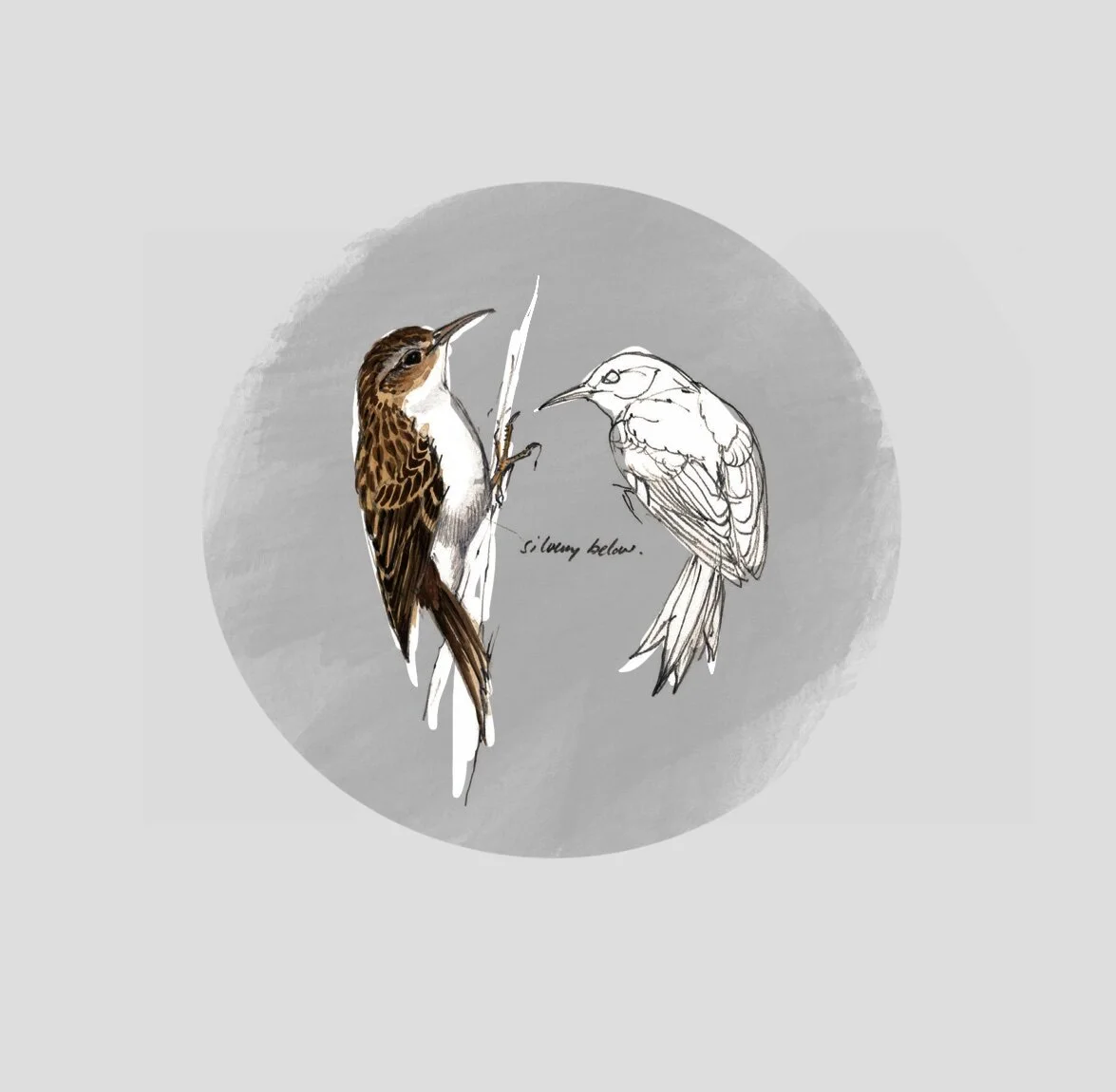A summer visitor to river banks and wetlands in the northwest of Switzerland. It has a characteristic wild song whose pattern is very hard to describe - have a listen.
REED WARBLER (Acrocephalus scirpaceus) Rousserolle effarvatte
A bird mostly confined to reed beds where it can be hard to see but is easily heard.
GREAT REED WARBLER (Acrocephalus arundinaceous) -Rousserolle turdoïde
A bird of the reed beds, for a warbler it is quite large and has a distinctive rough tone to its song.
SAVI’S WARBLER (Locustella luscinoides) - Locustelle luscinoïde
A shy bird of the reedbeds, difficult to see and difficult to hear as it sounds like an insect:
COMMON WHITETHROAT (Sylvia communis) - Fauvette grisette
A rather uncommon bird of scrubby vegetation. Not that hard to see, it gives a hurried little scratchy song often from an exposed perch.
GARDEN WARBLER (Sylvia borin) -Fauvette des jardins
The definitive “little brown job”, shy and hides and sings in dense vegetation. The song is hard to distinguish from Blackcap.
BLACKCAP (Sylvia atricapilla) - Fauvette à tête noire
A common bird of forests, scrub and mature gardens, difficult to see as it usually hides in dense vegetation. The black cap of the male is unmistakable. The song is rather rapid and scratchy, and easily confused with a Garden Warbler.
WOOD WARBLER (Phylloscopus sibilatrix) -Pouillot siffleur
A pretty little yellowish warbler of broad-leafed woodlands whose song heralds the arrival of spring.
CHIFF CHAFF (Phylloscopus collybita) - Pouillot véloce
A small warbler very similar to the Willow Warbler but with black legs not brown. But a very distinctive and pleasant song that bounces up and down.
WILLOW WARBLER (Phylloscopus trochilus) - Pouillot fitis
A small warbler very similar to the Chiff Chaff but with brown legs not black. But a very distinctive and pleasant song:
FIRECREST (Regulus ignicapillus) Roitelet triple-bandeau GOLDCREST (Regulus regulus) Roitelet huppé
Two small warblers very similar in appearance habits and sounds. This entry will help you identify them.
LONG-TAILED TIT (Aegithalus caudatus) - Mésange à longue queue
A bird of lowland scrub and deciduous woodlands normally below 1000m. Sociable and normally encountered in flocks, so the most frequently heard sounds seem like contact calls.
GREAT TIT (Parus major) - Mésange charbonnière
A very common bird of woodlands and forests that has thrived in gardens and agricultural areas. Its basic song has many variations but is a ringing “teacher-teacher-teacher” .
COAL TIT (Periparus ater) - Mésange noire
Common in all woodlands but especially in pine forests up to the treeline. Its song is variable but all variants are based on the same basic two-note see-sawing “whee-choo”.
BLUE TIT (Cyanistes caerulius) - Mésange bleue
Found in most habitats below 1500m and a common garden bird in the lowlands. The song is a complex mixture of a harsh “churr” preceded by high-pitched notes.
MARSH TIT (Poecile palustris) - Mésange nonnette
Despite the name this is a woodland bird found up to 1500m. Very difficult to separate from Willow Tit by eye, but with a diagnostic explosive call which easily separates these two.
WILLOW TIT (Poecile montanus) - Mésange boréale
Common in all woodlands but especially in pine forests up to the treeline at 2500m. There are two subspecies in Switzerland that have different songs, so voice is key in identifying this species. Click to learn the differences.
CRESTED TIT (Lophophanes cristatus) - Mésange huppée
Found in pine forests from 500m up to the treeline this tiny active bird is lovely to look at. The song is quite faint and easily overlooked.
EURASIAN TREECREEPER (Certhia familiaris) Grimpereau des bois and ……….SHORT-TOED TREECREEPER (Certhia brachydactyla) Grimpereau des jardins
These two small birds are very similar in appearance but can be identified in the field by paying close attention to their songs
NUTHATCH (Sitta europaea) - Sittelle torchepot
A very active bird of open woodlands, parks and gardens right up to the treeline. It feeds on tree trunks and major branches usually head-down. It’s most frequent call is a sharp far-carrying “chweep”.



















